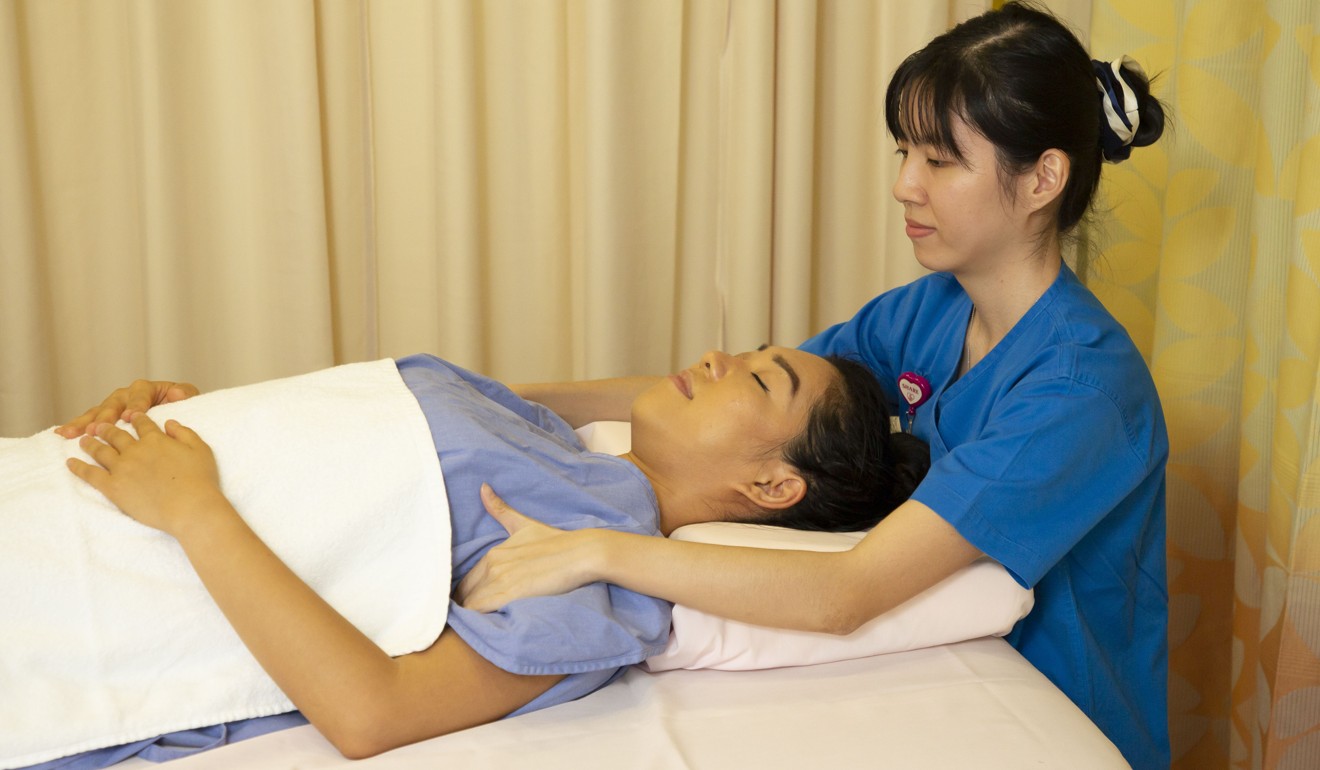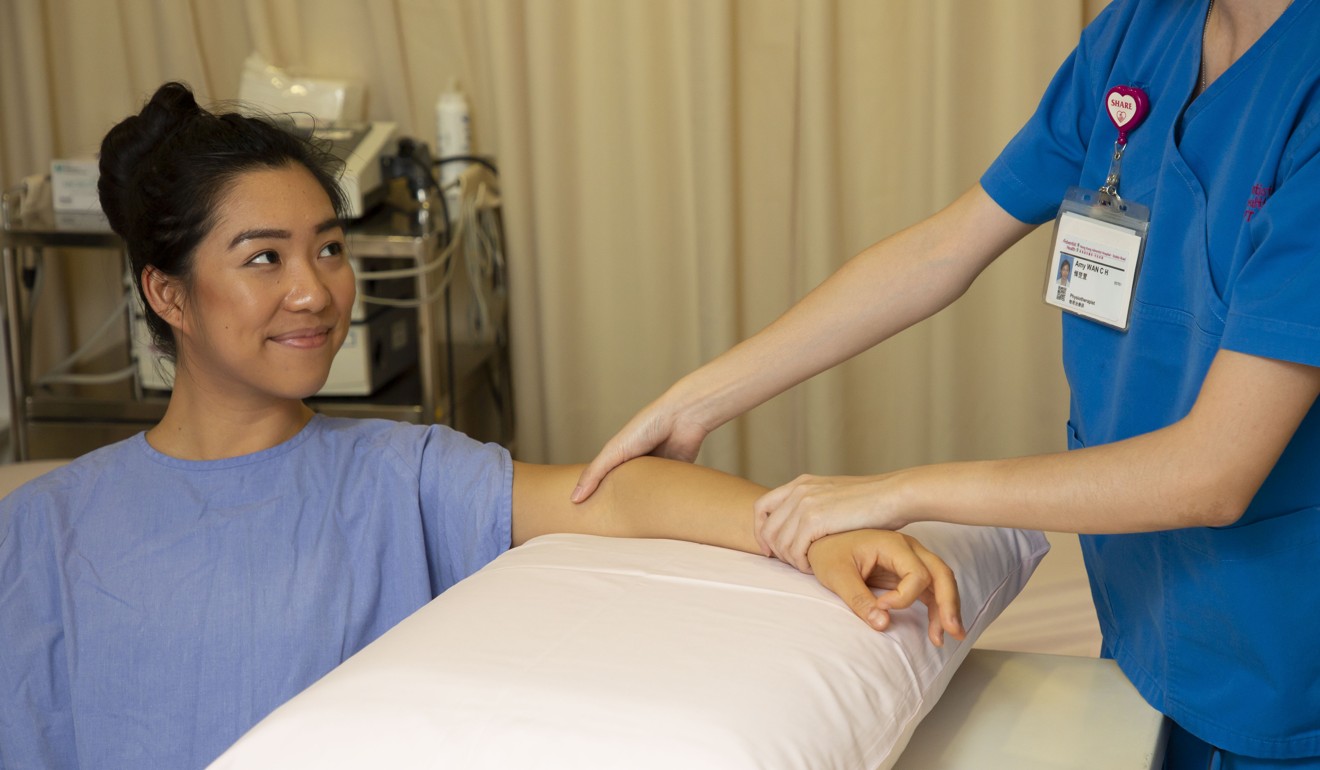
How improved 3D breast cancer test can save lives through early diagnosis among Hong Kong patients
- More precise 3D mammograms, which have led to greater detection accuracy, now available at Hong Kong Adventist Hospital – Stubbs Road in Happy Valley
- Hospital also offers enhanced physiotherapy and rehabilitation techniques to help patients tackle side effects such as lymphedema, with swelling to body tissues
At least 11 Hong Kong women are found to have breast cancer every day and one in every 15 women in the city will be diagnosed with the disease during their lifetime.
Cases of the most common type of cancer affecting Hong Kong’s female population have more than tripled over the past quarter century or so – up from 1,152 in 1993 to 4,108 in 2016, according to the Hong Kong Cancer Registry.
The advantages of the new 3D technology over the conventional one are that patients will feel less pain during the scan and the results are much more accurate
Early detection and treatment is essential because about one in four newly discovered cases are already at advanced levels of stages three or four.
Stage three is where the breast cancer has extended to beyond the immediate region of the tumour and may have invaded nearby lymph nodes and muscles, but has not spread to distant organs, while stage four means the cancer has spread to other areas of the body.
The five-year survival rate for women with stage-three breast cancer is 50 per cent, but for stage-four sufferers the five-year survival rate drops to 15 per cent.

Doctors and public health campaigns recommend that woman carry out regular self-examination to help detect early signs of the disease.
Women over the age of 40 are advised to undergo an annual mammogram, where low-energy X-rays are used to examine the human breast.
However, the procedure is widely considered to be uncomfortable and, in some cases, painful.
Test improves detection rate
Fortunately, there have been significant advances in breast cancer detection and treatment that give patients a greater chance of overcoming the disease, which are now available at hospitals such as Hong Kong Adventist Hospital – Stubbs Road, in Happy Valley.
Introduced in Hong Kong last year, a 3D mammogram can help to diagnose and detect cancer cells with greater precision and with less discomfort for patients compared with previous techniques.
Why is Hong Kong shoulder specialist with 35 years’ experience happy to still be ‘medical student’?
“The advantages of the new 3D technology over the conventional one are that patients will feel less pain during the scan and the results are much more accurate,” Danny Leung, director of the hospital’s Diagnostic Imaging Services and Oncology Centre, says.
The 3D method also achieves up to 80 per cent diagnostic accuracy, compared with about 70 per cent with the normal scanning procedure, which typically involves positioning the breast between two flat plates.

A 3D mammogram works is a similar way to another medical imaging technique, magnetic resonance imaging (MRI) scans, since the breast is examined not only from the top down but in layers, which are then combined to form a 3D image using advanced computer processing.
Hong Kong Adventist Hospital – Stubbs Road also offers a 3D guided biopsy in cases where additional supportive diagnosis is required.
Gentle exercises such as tai chi and yoga are great ways to relax the mind and keep body weight on track, as well as improve flexibility in the joints and drain away lymph [fluid]
“Compared with a 45-minute 2D biopsy, the 3D one takes only 15 minutes and is more comfortable for patients,” Leung says.
Physiotherapy and support for patients
Breast cancer recovery is regarded as a marathon, rather than a sprint, with patients often facing a series of hurdles, including the side effects of chemotherapy, radiation therapy and surgery, which can lead to soreness, swelling and nerve damage.
Patients who opt for a mastectomy – surgery to remove all of the breast tissue – also tend to experience added anxiety and depression.
How knee replacement surgery ended years of pain – and got patient back on her feet
Those who have had their lymph nodes removed as part of the operation also face an increased risk of lymphedema – a condition in which excess fluid of lymph, which flows through the lymphatic system, collects in tissues and causes swelling and/ or thickening and hardening of body tissues in the arms (and sometimes the legs).
It can cause patients to feel so stiff and swollen that carrying out even simple tasks, such as getting dressed, can become challenging or painful. In severe cases, lymph can end up leaking through the skin.
Hong Kong Cancer Fund says that 20 per cent of mastectomy patients have experienced some form of lymphedema, which is likely to last a lifetime.

To increase awareness and help breast cancer survivors in their recovery process, physiotherapy designed especially to ease their discomfort is being promoted more widely.
The techniques to alleviate lymphedema, for example, are so little known that physiotherapist Jocelyn Tam, manager of Hong Kong Adventist Hospital – Stubbs Road’s Rehabilitation Centre, discovered it only by chance, before realising that her skills could be helpful to breast cancer patients.
Minimally invasive heart surgery helps marathon runner with life-threatening condition get his ‘rhythm’ back
“I was the only physiotherapist in a small town in Australia about 20 years ago and I had to deal with patients with lymphedema,” Tam says.
“To help them I started learning about the [possible] treatment for lymphedema. I remember the joy that I felt and how happy my patients were.”
Beyond just physiotherapy
When Tam moved to Hong Kong she learned more about the different evidence-based guidelines on how to treat lymphedema patients and took courses on how to best help breast cancer survivors with the condition.
She and her team now incorporate Complete Decongestive Therapy (CDT), a technique that originated in Europe and Australia, which alleviates symptoms of lymphedema, such as swelling and pain.
“It combines different treatment approaches, including a specialised lymphatic massage, which stimulates or moves excess fluid away,” Tam says.
“In many cases, we also fit our patients with compression bandages, sleeves or stockings to control the swelling and encourage more effective fluid drainage.”
Other treatments available at the hospital include compression pumps and hydrotherapy.

Tam and her team also guide patients through recommended self-massages and activities.
“Gentle exercises such as tai chi and yoga are great ways to relax the mind and keep body weight on track, as well as improve flexibility in the joints and drain away lymph,” she says.
However, sometimes the best therapy Tam can provide simply involves moral support for those struggling through their recovery process.
“Very often, during the one-hour sessions, patients share their emotions and feelings,” she says. “I give them advice about ways to relieve the stress to help them feel better and be more positive.”
